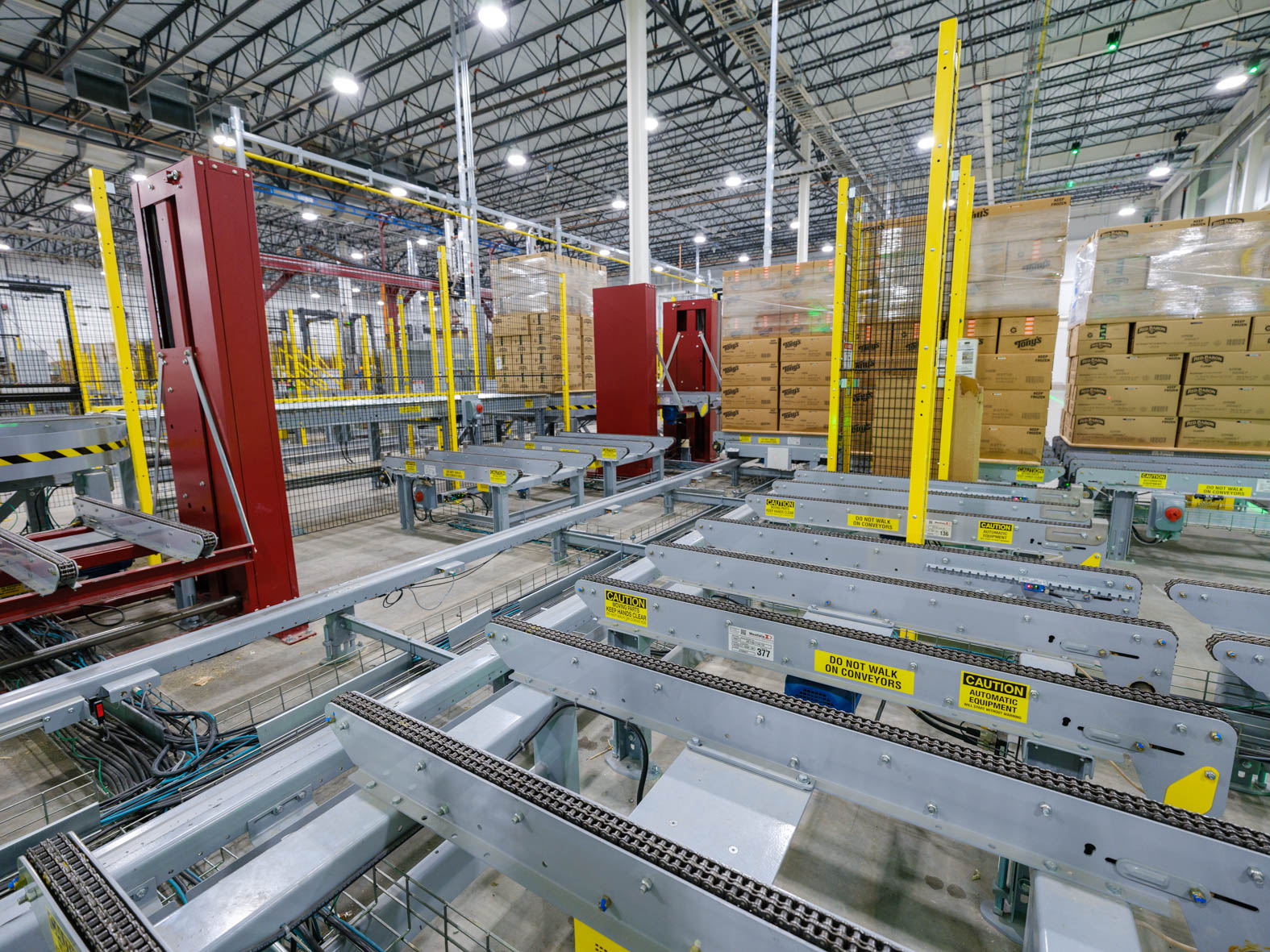What Is Automated Material Handling?
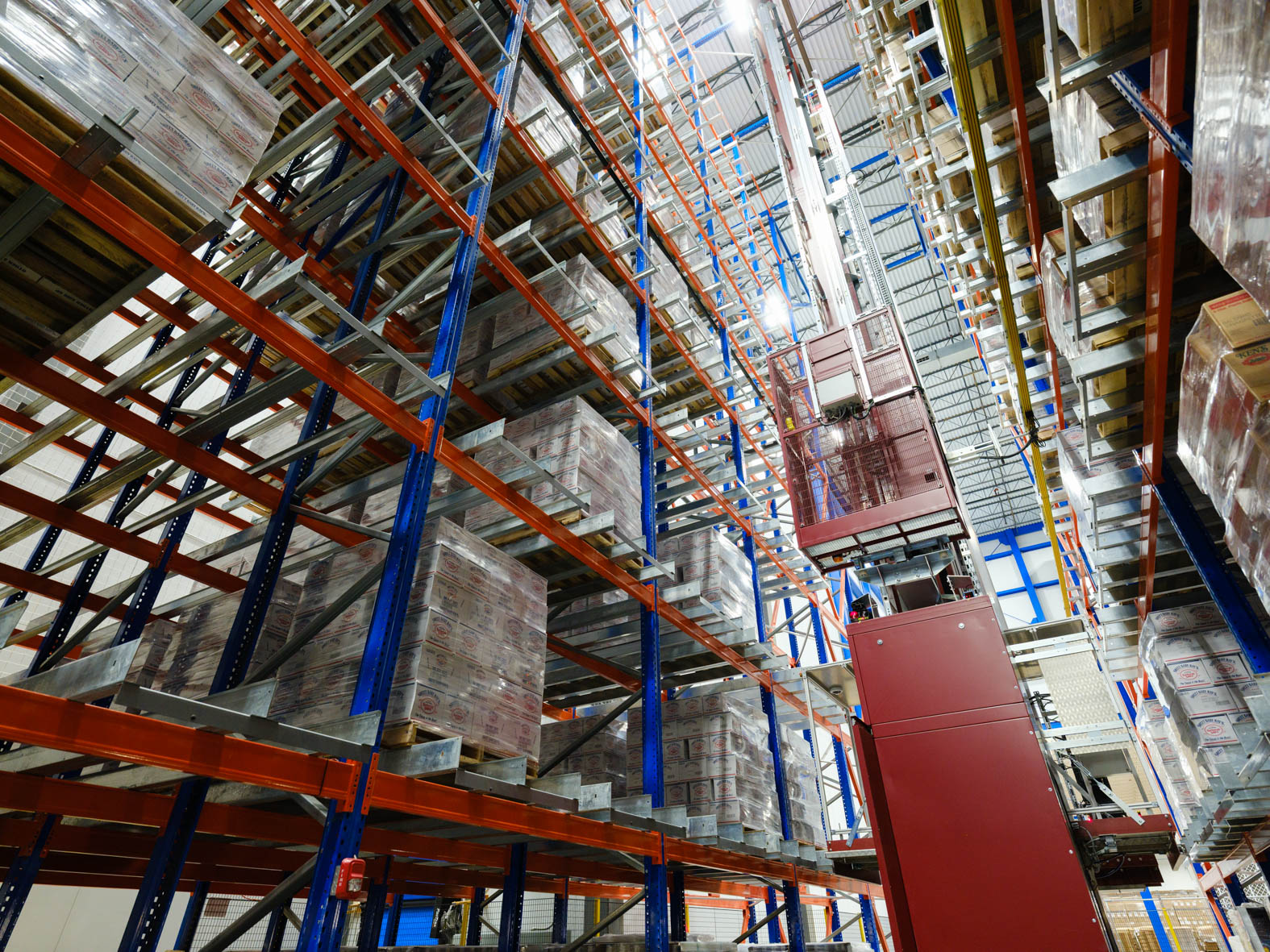
Simply put, automated material handling is the use of machines, robotics, and software to transport, store, and organize materials throughout your operation. Imagine if your warehouse could run faster, safer, and more accurately with fewer manual touchpoints. That’s the promise of automated material handling!
Learn the basics of automated material handling, including:
- Benefits of automated material handling in today’s world
- Types of equipment involved and what each excels in
- Industries where automation makes the biggest difference
But first, let’s begin with how these systems actually work in the real world.
How Automated Material Handling Works
Automated material handling transforms manual tasks into a coordinated dance of smart machines working in harmony. Advanced vision systems, conveyors, storage retrieval machines (SRMs), robotic arms, and self-driving vehicles all operate as one cohesive unit, orchestrated by an intelligent software platform that serves as the brain of your warehouse management system. Like other sophisticated warehouse automation approaches, these technologies work together seamlessly.
Your processing accelerates and human error virtually disappears when these systems work together, keeping your facility humming along with minimal interruptions.
5 Key Advantages of Automated Material Handling
Automation can create huge improvements for companies including:
- Faster order processing: Struggling to handle peak seasons and tight delivery windows? Automated systems move goods faster than manual processes.
- Near-perfect accuracy: Automated material handling systems achieve high accuracy rates. This virtually eliminates costly mistakes that come with manual picking and sorting.
- Lower labor costs over time: The initial investment is substantial. But automation pays for itself by reducing your dependence on manual labor.
- Safer work environment: Machines take over the heavy lifting and repetitive motions that lead to worker injuries, which creates a healthier workplace for your team.
- Better use of space: Vertical storage and high-density configurations free up valuable floor space. This lets you store more without expanding your footprint.
These benefits make a pretty compelling case for automation. It’s one that can have a direct impact on your profitability and competitive position.
What is an Automated Material Handling System?
An automated material handling system brings together different tech to move and manage materials without the need for human labor. You might start with something straightforward like a conveyor line, or build out a network that involves robotics and sensors.
The building blocks include conveyor systems that create pathways for goods, automated guided vehicles or autonomous mobile robots that transport materials independently, robotic arms that handle picking and packing, and automated storage and retrieval systems that maximize your storage efficiency through smart automation.
Types of Automated Material Handling Systems
Every facility has different needs, which is why automated material handling comes in so many forms. The key is matching the below technology to your business’ specific challenges and goals.
– Conveyor Systems
The workhorses of automation, conveyors keep products moving steadily through your facility. You can customize them with different belts, rollers, and chains to handle everything from small packages to heavy pallets.
– Autonomous Mobile Robots (AMRs) / Automated Guided Vehicles (AGVs)
Both move materials through your facility, but with different approaches. AGVs stick to fixed paths guided by physical markers – perfect for high-volume, repetitive routes. AMRs navigate dynamically, using sensors and AI to dodge obstacles and adapt to changing environments. Think of AGVs as trains on invisible tracks, while AMRs are more like smart cars finding their own way.
– Robotic Picking Systems
Picture a robotic arm with cameras for eyes and pneumatic pads or smart grippers for hands. These systems keep getting better as vision technology improves, handling more product types with greater precision. When deployed for layer and case picking, they transform repetitive manual tasks into high-speed operations that boost productivity while slashing error rates to near zero.
– Sortation Systems
When you need to route items to different destinations fast, this is the answer. Using conveyors, diverters, and trays, they’re essential for high-speed distribution.
– AS/RS Solutions
High-density storage uses automated cranes or shuttles to stockpile and retrieve items efficiently. AS/RS solutions are ideal when you’re tight on space but need to maximize storage capacity.
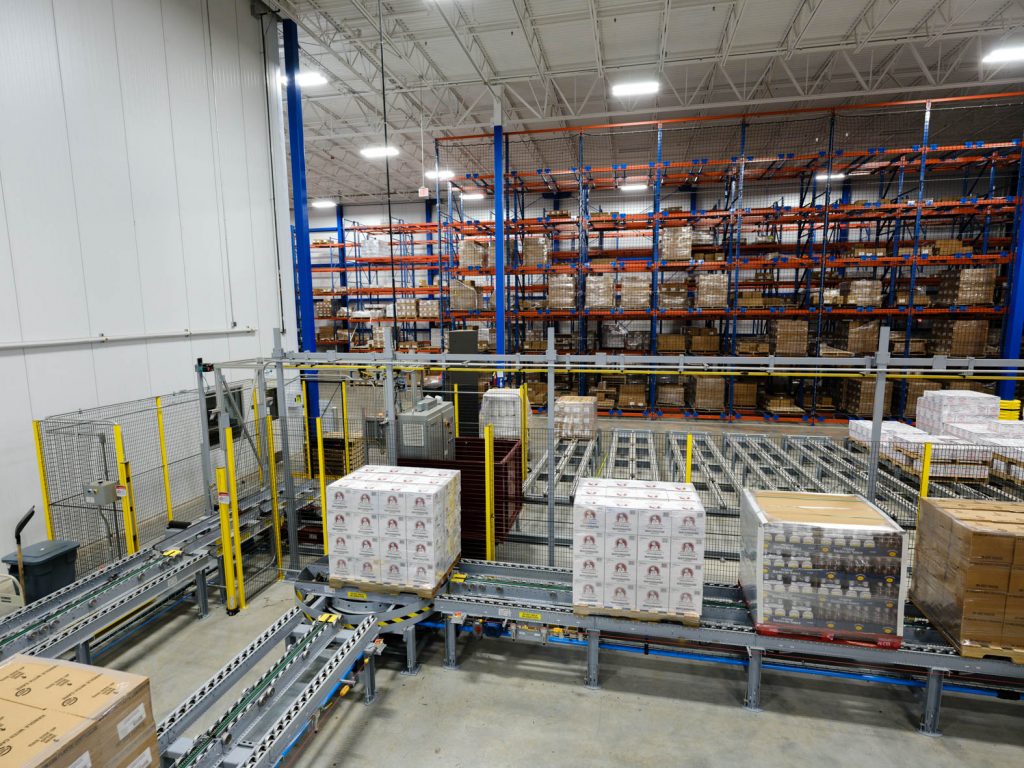
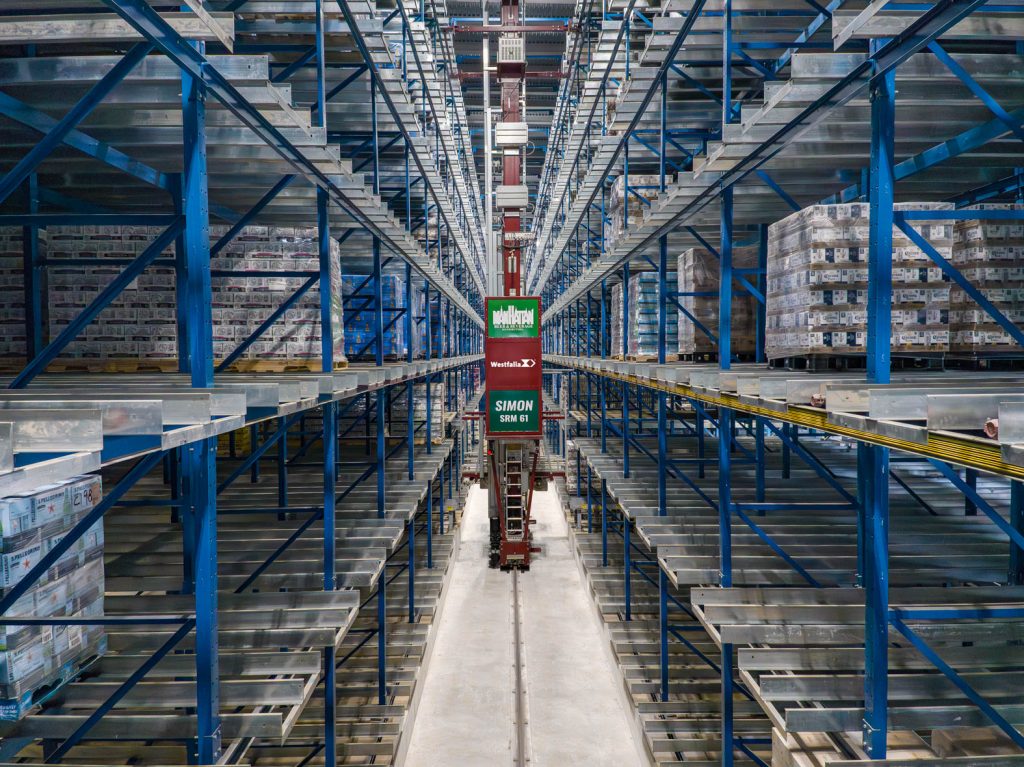
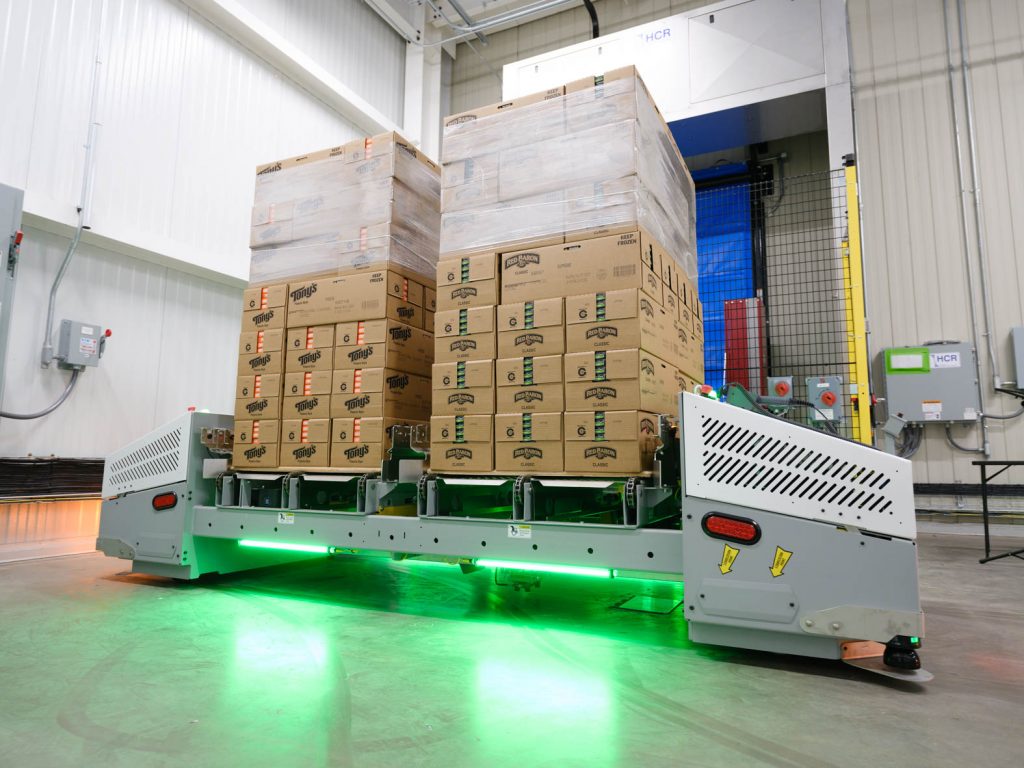
Where Automated Material Handling Creates Value
Automation delivers the most impact in fast-paced environments where accuracy and speed matter most. For example, beverage distributors rely on automated storage and retrieval systems to handle thousands of pallets daily with exceptional precision.
Meanwhile, cold storage facilities and pharmaceutical operations use automation to maintain strict compliance while minimizing risk. Finally, manufacturing plants eliminate bottlenecks and keep production flowing smoothly through strategic automation.
At Westfalia, we’ve built automated warehouse solutions specifically for these complex challenges. We can tailor systems to match the unique requirements of practically any operation.
What Successful Automated Material Handling Implementation Looks Like
Getting automation right requires thoughtful planning rather than rushing in. Start by understanding your current pain points and setting clear goals for what you want to achieve.
Next, look honestly at your existing infrastructure and how new systems will integrate. Don’t overlook the importance of training and managing the change for your employees.
The upfront costs can seem daunting, but focus on the long-term return on investment. Many companies take a phased approach by tackling high-impact areas first and expanding as they prove the value.
Automated material handling has shifted from “nice to have” to essential for staying competitive in today’s world. The combination of greater efficiency, lower costs, and improved safety makes it a smart investment for any operation serious about thriving in today’s demanding marketplace. Contact the experts at Westfalia Technologies to learn how we can help solve your automation needs.
